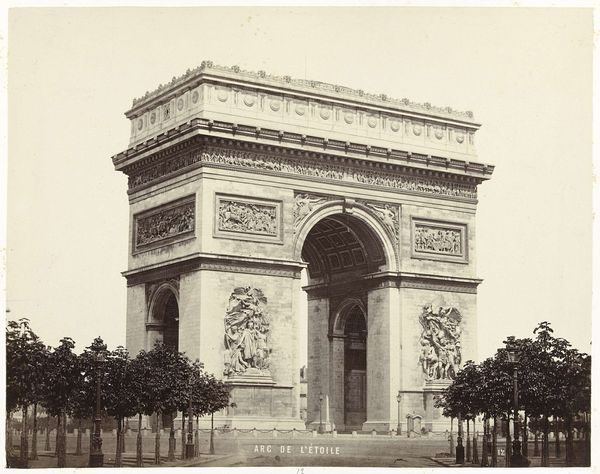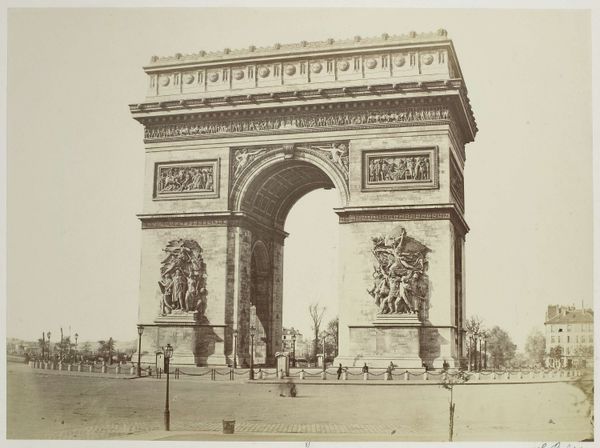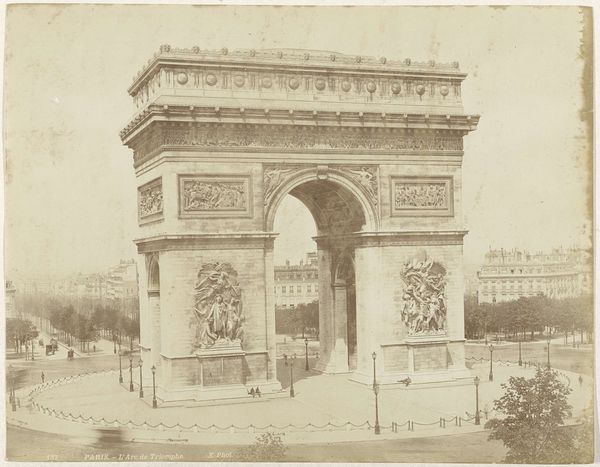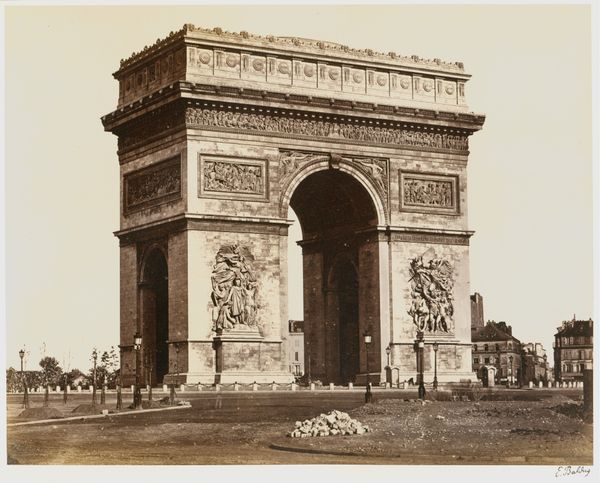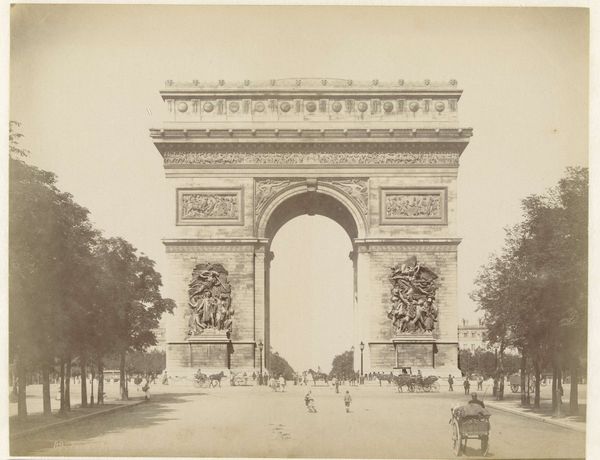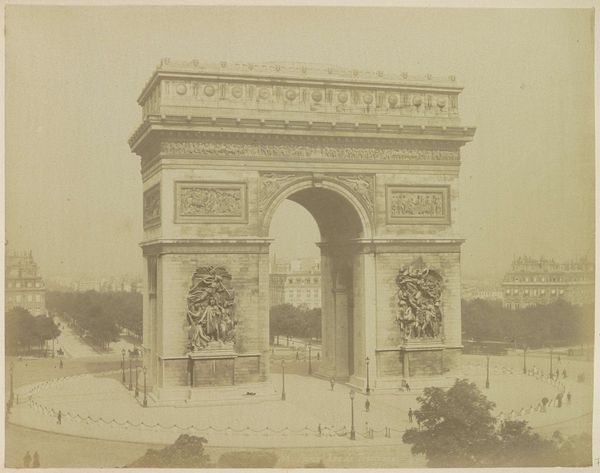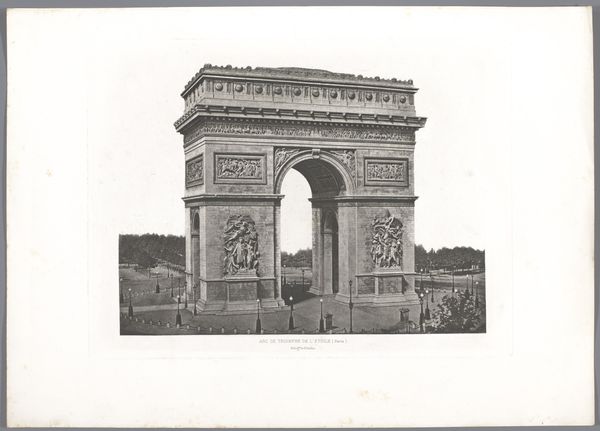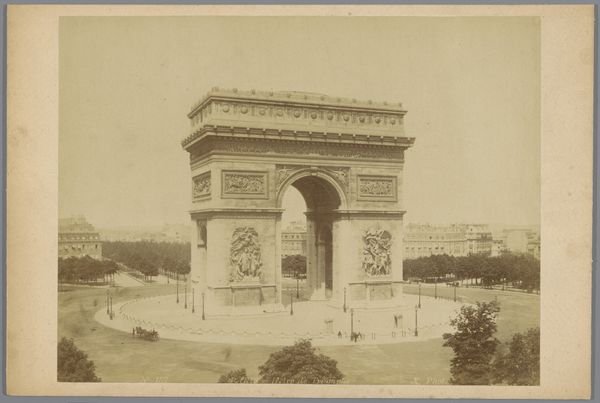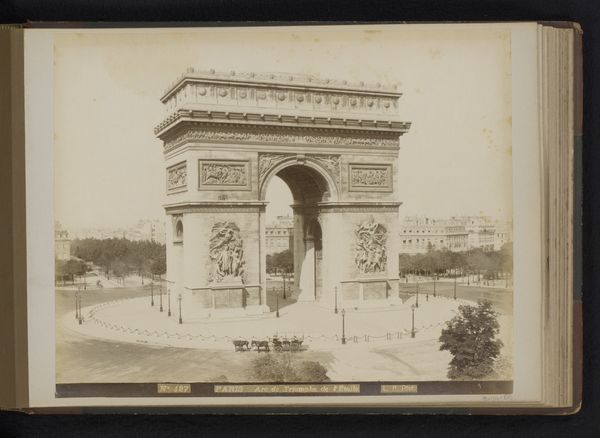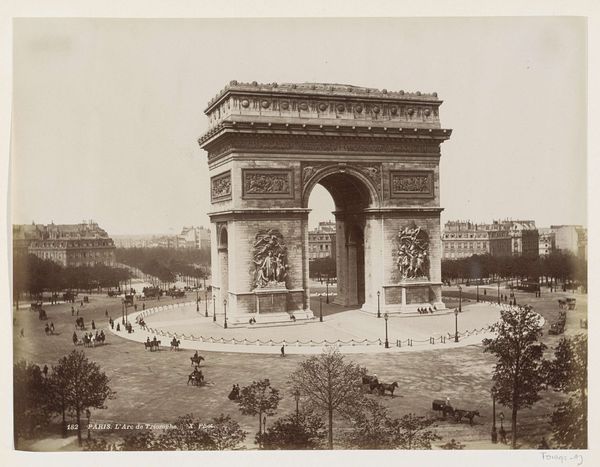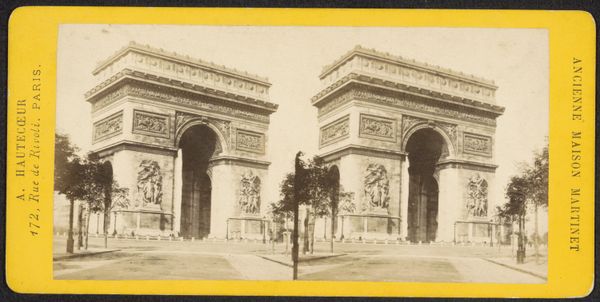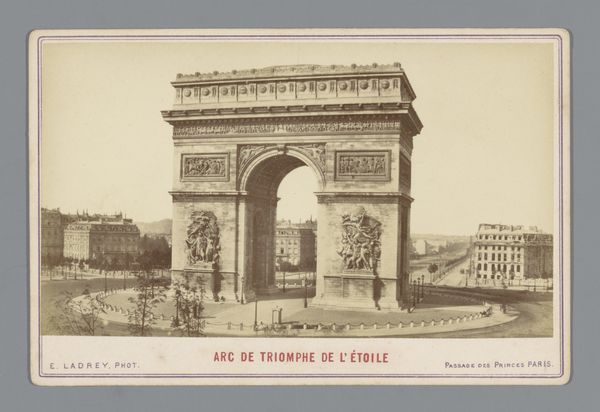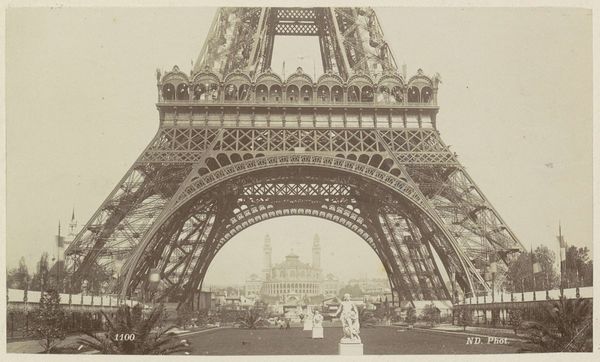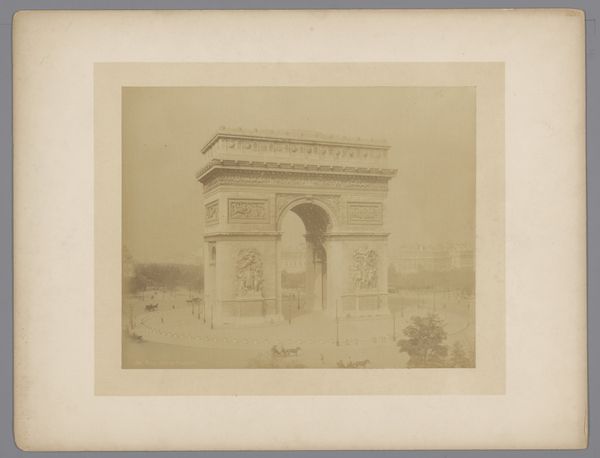
Dimensions: height 155 mm, width 215 mm, height 307 mm, width 398 mm
Copyright: Rijks Museum: Open Domain
Curator: Albert Mansuy’s daguerreotype, titled "Arc de Triomphe te Parijs," created sometime between 1860 and 1880. What are your first impressions? Editor: The stark contrast immediately pulls me in. The monument, solid and permanent, dominates the scene, yet the overall sepia tone evokes a sense of melancholy, almost like viewing a memory. Curator: Notice the interplay of light and shadow across the surface. Mansuy expertly captures the neoclassicist architectural details of the Arc; the entablature, the pilasters, and the sculptural reliefs all defined by the subtle gradation of light across its stone surfaces. The photograph meticulously balances its composition. Editor: But that neoclassical style and grand scale are hardly neutral. This monument commemorates military victories under Napoleon, perpetuating a narrative of French imperial power. Viewing it through a contemporary lens, we must acknowledge that it stands as a symbol tied to colonialism. The starkness could signify not just melancholy, but a reckoning with the historical violence inherent in its very structure. Curator: Of course, and the symmetrical nature underscores the authority it represents, but observe how the photographic process itself affects the viewer’s interpretation. The daguerreotype, as an early form of photography, still retained a strong indexical connection to reality, further strengthening that imposing neoclassical presence through realism. Editor: Photography doesn't deliver neutral representation, either. Early photographic techniques often excluded diverse representation because of longer exposure times and other constraints related to diverse skin tones. How might these inherent limitations be viewed now, thinking of photographic technology as itself being deeply influenced by social and racial bias from the very beginning? Curator: That is precisely the benefit of critical art engagement – by examining this artwork with perspectives that include structural analysis along with consideration of societal narratives, we may begin to appreciate its complexities within culture and society. Editor: Agreed. Approaching it critically lets us confront not only what it shows, but also what it omits, encouraging a deeper understanding of how national monuments operate within society, both historically and today.
Comments
No comments
Be the first to comment and join the conversation on the ultimate creative platform.
